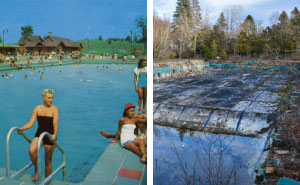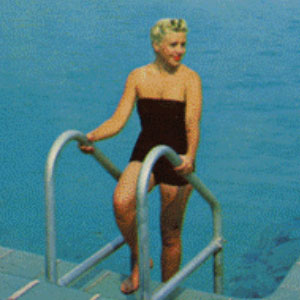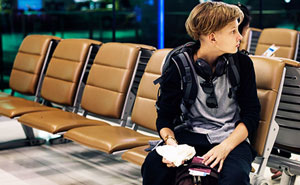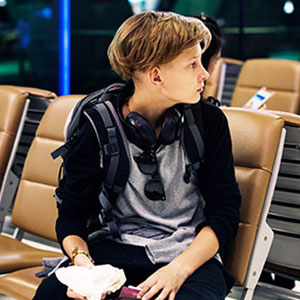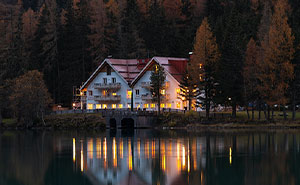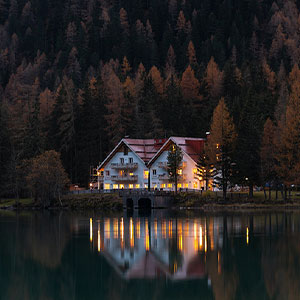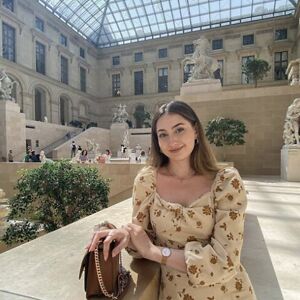
6Kviews
Raw Reality Of Life And People In The Middle Eastern Region Captured By This Iraqi Photographer (61 Pics)
Tamara Abdul Hadi is an independent photographer born to Iraqi parents in the United Arab Emirates and raised in Montreal, Canada. Abdul Hadi's work explores the complexity and idiosyncrasy of minority communities that are often subjected to stereotypes and under-representation interchangeably. Her work also touches on ideas of masculinity and self-representation and has been successfully published in The New York Times, The Guardian, The Wall Street Journal, The Financial Times, VICE, etc.
Along with being a photographer, Tamara is also an educator who has given photography workshops in Palestine, Egypt, Iraq, Lebanon, the UAE, Kuwait, and Tunisia. Back In 2016, Tamara, along with her collective Rawiya, presented a documentary photography storytelling workshop in Gaza.
Bored Panda reached out to the photographer to find out more.
"I am an Iraqi photographer whose work is concerned with the historic and contemporary representation of my culture, in its diversity. Photography allows me to express, question, and be curious."
More info: Instagram | tamarabdulhadi.com
This post may include affiliate links.
Buffalo Child.
Nihaya, around 10 years old (they often don't know their exact ages here) sits on her family's buffalo at sunrise in the Marshes. I spent the night in Nihaya's family's reed house and woke up to the young women of the family milking the buffalos along with their father and brothers.
the sad thing is, thats probably all they have. as in, thats probably all their only playground is
2009/2015.
The cemetery of Bab il Nasr in Cairo has been home to hundreds of families living among their deceased ancestors for the past 60 years. This sprawling cemetery is located in central Cairo, near the Imam Hussein Mosque. 'This is a cemetery of the living', says Mohammed Abdel Lateef. He lives with 9 other family members in their family's section of the graveyard. Mohammed, in his thirties, and his siblings, Hussien, Ahmed, and Ahlam, were born here.
"This has been my home since 1966," says Haj Abdel Lateef, Mohammed's father, and the family's patriarch. He and his wife Atiyat have raised 5 children here. They went to schools nearby, work in the area, and now have children of their own.
Banin, around 10 years old (they often don't know their exact ages here), sits on her favorite buffalo near her home in the Iraqi Marshlands. Banin was a very high spirited young lady who took me around, introducing me to her many family members.
2009/2015.
The cemetery of Bab il Nasr in Cairo has been home to hundreds of families living among their deceased ancestors for the past 60 years. This sprawling cemetery is located in central Cairo, near the Imam Hussein Mosque. 'This is a cemetery of the living', says Mohammed Abdel Lateef. He lives with 9 other family members in their family's section of the graveyard. Mohammed, in his thirties, and his siblings, Hussien, Ahmed, and Ahlam, were born here.
"This has been my home since 1966," says Haj Abdel Lateef, Mohammed's father, and the family's patriarch. He and his wife Atiyat have raised 5 children here. They went to schools nearby, work in the area, and now have children of their own.
Between the Tigris and Euphrates Rivers, in what was once the center of ancient Mesopotamia, lies an area of wetland known as al-ahwar of southern Iraq (the Marshes). It was on this spot, between the 4th and 3rd millennium BCE, that Sumerians built their houses from reeds native to the marshlands, an ancient architectural practice still followed today. Far more recently, in the 1950s, the Iraqi government started draining the lands to support the extraction of a newly-discovered natural resource: oil.
The social and political life of the area changed again a few short decades later, in the 1980s and 1990s when Saddam Hussein further drained the lands as a way to prevent domestic rebels from seeking sanctuary there, and as punishment for anti-government activities supported by the area’s inhabitants. After the US- and UK-led invasion and occupation of Iraq in 2003, and the removal of the former regime, comprehensive efforts to repair the marshes and its ecosystem were initiated in earnest with the hope of restoring everyday life for the area’s people, the mi’dan. These images are part of series visualizing the people of the contemporary Iraqi Marshes.
2009/2015.
The cemetery of Bab il Nasr in Cairo has been home to hundreds of families living among their deceased ancestors for the past 60 years. This sprawling cemetery is located in central Cairo, near the Imam Hussein Mosque. 'This is a cemetery of the living', says Mohammed Abdel Lateef. He lives with 9 other family members in their family's section of the graveyard. Mohammed, in his thirties, and his siblings, Hussien, Ahmed, and Ahlam, were born here.
"This has been my home since 1966," says Haj Abdel Lateef, Mohammed's father, and the family's patriarch. He and his wife Atiyat have raised 5 children here. They went to schools nearby, work in the area, and now have children of their own.
Fade to Black is a portrait series documenting African asylum seekers' barbershop culture in South Tel Aviv. These Muslim and Christian Sudanese, Eritrean and Ethiopian refugees have made the Levinsky Park neighborhood home, where they run barbershops, restaurants, and clothing stores. Finding their communities in the midst of being discriminated against systemically by their 'chosen home'.
This series was born out of an appreciation for their personal style and their self-expression through their fashion and hairstyles. From 2006-2012, a large influx of African asylum seekers arrived in Israel, with many having been trafficked through the Sinai Peninsula. Currently, about 38,000 of them are facing deportation.
This is a very complex issue. Those who can prove they are genuine asylum seekers get residency cards and by now over 20,000 have gotten full citizenship. What these are those who entered illegally, cannot prove they are asylum seekers, over 70% of which are young males looking for work. There are a lot of issues with a country 8 million people, with 1.5 million of their own citizens living below the poverty line dealing with over 200,000 people claiming asylum. Also sorry to inform the description, they are not running " barbershops, restaurants, and clothing stores" it is illegal for asylum seekers to be employed or own businesses unless they get their full residency card, which most don't. Out of the 38,000 listed as facing deportation, if you look it up, 22,000 have criminal records during their time in Israel for violent felonies and similar crimes and all 38,000 had full hearings where the state had to prove these people were not legitimate asylum seekers.
Leopard print and colours other than black....these ladies own it !!
Meet Mohammad. He is a 22-year-old Syrian refugee currently in Lebanon. Mohammad suffers from the muscle disease myopathy, and as time goes by, he will slowly lose functionality in all his limbs. Mohammad and 3 of his siblings all suffer from the disease.
In this photo, Mohamad does one of his favorite things, sitting in the sunshine outside his home.
Incredible, the true grit of this young man !! All odds against him and still he is well-groomed and well-dressed. Looking at his surroundings and thinking of what lies in wait for him,it breaks my heart,
Playing cards in an empty swimming pool.
This 'war machine graveyard' in Sulimaniyah, Kurdistan -Northern Iraq- is a grim reminder of decades of war in Iraq. Mountains of used missiles, US military tanks, humvees, and other used weaponry fill the landscape.
This landscape speaks volumes as to the result of the destruction, occupation, and violence that this country has witnessed in the last 30 years.
Al Amari, Ramallah.
The lives of people living in marginalized communities can be tremendously underrepresented. Who they are, their lives, and their stories are often undocumented. Do they choose how to represent their own photo? Are they given the option to imagine themselves richly in their own eyes? This project goes beyond the idea of people snapping their own photographs, it is an interactive exercise where people have the ability to control their own image and for once, decide how to represent themselves.
This project was inspired by the Handsworth Self Portrait, Birmingham, 1979.
Meet Mohammad. He just turned 6 years old and like his siblings Bayan (12) and Zamzam (8) he has myopathy. The siblings recently received orthopedic devices that will help with their movement. In this photo, Mohammad tries his out at home.
Between the Tigris and Euphrates Rivers, in what was once the center of ancient Mesopotamia, lies an area of wetland known as al-ahwar of southern Iraq (the Marshes). It was on this spot, between the 4th and 3rd millennium BCE, that Sumerians built their houses from reeds native to the marshlands, an ancient architectural practice still followed today. Far more recently, in the 1950s, the Iraqi government started draining the lands to support the extraction of a newly-discovered natural resource: oil.
The social and political life of the area changed again a few short decades later, in the 1980s and 1990s when Saddam Hussein further drained the lands as a way to prevent domestic rebels from seeking sanctuary there, and as punishment for anti-government activities supported by the area’s inhabitants. After the US- and UK-led invasion and occupation of Iraq in 2003, and the removal of the former regime, comprehensive efforts to repair the marshes and its ecosystem were initiated in earnest with the hope of restoring everyday life for the area’s people, the mi’dan. These images are part of series visualizing the people of the contemporary Iraqi Marshes.
Cheerleaders.
Zahra and Mohamad, along with their parents, waiting to be picked up and taken to their weekly physiotherapy sessions.
2009-2014.
Started in 2009, this portrait series is part of a large body of work capturing semi-nude Arab men of diverse backgrounds.
The conceptual aim of this portrait series is two-fold: Trying to uncover and break the stereotypes placed upon the Arab male, and providing an alternative visual representation of that identity. Secondly, it is a celebration of their sensual beauty, an unexplored aspect of the identity of the contemporary Arab man, on the cusp of change in a society that reveres an out-dated form of hyper-masculinity.
Photographs of young men pre, mid, and during flight, diving into the sea surrounding Beirut, Akka, Tunis, and Gaza.
Al Amari, Ramallah.
The lives of people living in marginalized communities can be tremendously underrepresented. Who they are, their lives, and their stories are often undocumented. Do they choose how to represent their own photo? Are they given the option to imagine themselves richly in their own eyes? This project goes beyond the idea of people snapping their own photographs, it is an interactive exercise where people have the ability to control their own image and for once, decide how to represent themselves.
This project was inspired by the Handsworth Self Portrait, Birmingham, 1979.
Best friends.
Meet Karrar and Falah. They dressed alike on purpose that day. 19 and 25 years old respectively, they are from Chabayish, on the banks of the Euphrates, a 10-minute boat drive to the Marsh Islands.
2009-2014.
Started in 2009, this portrait series is part of a large body of work capturing semi-nude Arab men of diverse backgrounds.
The conceptual aim of this portrait series is two-fold: Trying to uncover and break the stereotypes placed upon the Arab male, and providing an alternative visual representation of that identity. Secondly, it is a celebration of their sensual beauty, an unexplored aspect of the identity of the contemporary Arab man, on the cusp of change in a society that reveres an out-dated form of hyper-masculinity.
I came across Arakel this morning while he was having a cigarette at the door of his house.
A bit of context: Arakel is a city in (islamic) Azerbaijan, in the disputed Nagoro-Karabach region, where the majority of the population consists of (christian) Armenians. [Edit: I initially thought Arakel referred to the location where the picture was taken, but I just realised that “Arakel” is just the name of this guy]
Seven is a series of images documenting the destruction of a Palestinian neighborhood in the city of Lyd, in Occupied Palestine. 7 homes belonging to the Abu Eid family were reduced to rubble when the Israeli military destroyed the neighborhood in December 2010 leaving them to sleep in tents next to their former homes. These are images of the tents in the aftermath.
I see NO trailers here but rubble of bricks and stones,destruction with no purpose or point to it.
'Najaf is a place for burying, not for living' - Iraqi proverb.
Wadi As-Salam [eng; Valley of Peace], is a cemetery located in Najaf, a province in the Western part of Central Iraq. Najaf is distinguished by this vast cemetery (over 5 million people are buried here), which is considered to be the second largest and oldest cemetery in the world. The cemetery is home to generations upon generations of Iraqis and Shiaa's gone past and has also bore witness to generations of turmoil and war both directly on its land and beneath it. It also saw fierce battles between US troops and the Mehdi army during the battle for Najaf in 2004.
The symbolic value of the cemetery's name nestled in a nation so overcome by war is what compelled this photo series.
'Najaf is a place for burying, not for living' - Iraqi proverb
Wadi As-Salam [eng; Valley of Peace], is a cemetery located in Najaf, a province in the Western part of Central Iraq. Najaf is distinguished by this vast cemetery (over 5 million people are buried here), which is considered to be the second largest and oldest cemetery in the world. The cemetery is home to generations upon generations of Iraqis and Shiaa's gone past and has also bore witness to generations of turmoil and war both directly on its land and beneath it. It also saw fierce battles between US troops and the Mehdi army during the battle for Najaf in 2004.
The symbolic value of the cemetery's name nestled in a nation so overcome by war is what compelled this photo series.
Ahmed and his horse(s).
Thank you to this kind gentleman for letting me photograph him out of my appreciation for his pink on pink combo.
Fade to Black is a portrait series documenting African asylum seekers' barbershop culture in South Tel Aviv. These Muslim and Christian Sudanese, Eritrean and Ethiopian refugees have made the Levinsky Park neighborhood home, where they run barbershops, restaurants, and clothing stores. Finding their communities in the midst of being discriminated against systemically by their 'chosen home'.
This series was born out of an appreciation for their personal style and their self-expression through their fashion and hairstyles. From 2006-2012, a large influx of African asylum seekers arrived in Israel, with many having been trafficked through the Sinai Peninsula. Currently, about 38,000 of them are facing deportation.
This is a very complex issue. Those who can prove they are genuine asylum seekers get residency cards and by now over 20,000 have gotten full citizenship. What these are those who entered illegally, cannot prove they are asylum seekers, over 70% of which are young males looking for work. There are a lot of issues with a country 8 million people, with 1.5 million of their own citizens living below the poverty line dealing with over 200,000 people claiming asylum. Also sorry to inform the description, they are not running " barbershops, restaurants, and clothing stores" it is illegal for asylum seekers to be employed or own businesses unless they get their full residency card, which most don't. Out of the 38,000 listed as facing deportation, if you look it up, 22,000 have criminal records during their time in Israel for violent felonies and similar crimes and all 38,000 had full hearings where the state had to prove these people were not legitimate asylum seekers.
This 'war machine graveyard' in Sulimaniyah, Kurdistan -Northern Iraq- is a grim reminder of decades of war in Iraq. Mountains of used missiles, US military tanks, humvees, and other used weaponry fill the landscape.
This landscape speaks volumes as to the result of the destruction, occupation, and violence that this country has witnessed in the last 30 years.
Beirut: Abdel Atheem is a hair artist. He practices his art at his barbershop “Salon El Raqi” which roughly translates to “Elegant Salon” in the Naba’a neighborhood of Beirut, Lebanon. Abdel Atheem is from Raqqa in Syria and is displaced in Beirut. His specialties include a beard trim and black dye combination.
Ramallah: Tamer Shehadeh wants to bring Palestinian hairdressing worldwide. Shehadeh owns “Salon Tamer” that began as a small shop in the Qalandia refugee camp in Ramallah and has grown into a much larger shop on a main street in the city. Tamer specializes in facial treatments, gold face masks, and waxes.
Gaza: Mohamad Bakir is a hairdresser in the city of Gaza. He inherited his barbershop “Salon Rimal” from his father and grooms most of the football players of the city. Bakir released his book “Historical Encyclopedia of Hairdressing in Gaza” in 2016.
"The People’s Salon” is a celebration of the burgeoning creative talent that is designing and shaping our men’s hair. It is an appreciation of their personal style and their self-expression through self-care and hairstyles.
Seven is a series of images documenting the destruction of a Palestinian neighborhood in the city of Lyd, in Occupied Palestine. 7 homes belonging to the Abu Eid family were reduced to rubble when the Israeli military destroyed the neighborhood in December 2010 leaving them to sleep in tents next to their former homes. These are images of the tents in the aftermath.
The term "Occupied Palestine" is a political term, not a legal one. The the legal term is "Disputed Territories" due to the complexity and disputed legality of this area. This area is in Zone C which under the Oslo Accords is Israeli jurisdiction. Further this was not a city but a makeshift camp of 40 trailers, built illegally without permits in a military "no-go-zone" just 8 years prior to being demolished and was destroyed after a 3 year legal battle with a court order, done under the supervision of the International Red Cross. This is blatantly false and using politicized terms that are not factual.
Roi and Marvin, uncle and nephew.
'Najaf is a place for burying, not for living' - Iraqi proverb.
Wadi As-Salam [eng; Valley of Peace], is a cemetery located in Najaf, a province in the Western part of Central Iraq. Najaf is distinguished by this vast cemetery (over 5 million people are buried here), which is considered to be the second largest and oldest cemetery in the world. The cemetery is home to generations upon generations of Iraqis and Shiaa's gone past and has also bore witness to generations of turmoil and war both directly on its land and beneath it. It also saw fierce battles between US troops and the Mehdi army during the battle for Najaf in 2004.
The symbolic value of the cemetery's name nestled in a nation so overcome by war is what compelled this photo series.
Photographs of young men pre, mid, and during flight, diving into the sea surrounding Beirut, Akka, Tunis, and Gaza.
Beirut: Abdel Atheem is a hair artist. He practices his art at his barbershop “Salon El Raqi” which roughly translates to “Elegant Salon” in the Naba’a neighborhood of Beirut, Lebanon. Abdel Atheem is from Raqqa in Syria and is displaced in Beirut. His specialties include a beard trim and black dye combination.
Ramallah: Tamer Shehadeh wants to bring Palestinian hairdressing worldwide. Shehadeh owns “Salon Tamer” that began as a small shop in the Qalandia refugee camp in Ramallah and has grown into a much larger shop on a main street in the city. Tamer specializes in facial treatments, gold face masks, and waxes.
Gaza: Mohamad Bakir is a hairdresser in the city of Gaza. He inherited his barbershop “Salon Rimal” from his father and grooms most of the football players of the city. Bakir released his book “Historical Encyclopedia of Hairdressing in Gaza” in 2016.
"The People’s Salon” is a celebration of the burgeoning creative talent that is designing and shaping our men’s hair. It is an appreciation of their personal style and their self-expression through self-care and hairstyles.
Mehdi, Abbas, and Eidan, hanging after school in the town of Chabayish, Southern Iraq, near the Iraqi Marshlands.
Day 41.
Great photo ! Libanon,the birth-place of Kahlil Gibran,author of The Prophet.I had a chance encounter with a cousin of his in Lisbon...a lovely old lady who recited an unpublished poem of his....sadly, I understood little of what she recited but she told me what she could remember of him and that in English...
The author of the article did the commentary, not the photographer.
If only the photographer had left out the sly and biasing political commentary.
The author of the article did the commentary, not the photographer.
If only the photographer had left out the sly and biasing political commentary.

































